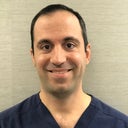Posted underEyelid Surgery q&a
How Sucessful and Painful is an Eye Bag Removal/upper Eyelift & How Long Recovery?
Answers (12)
From board-certified doctors and trusted medical professionals

Dr. Mehryar (Ray) Taban, MD, FACS
Oculoplastic Surgeon, Board Certified in Ophthalmology
Answer

Dr. A.J. Amadi, MD
Oculoplastic Surgeon, Board Certified in Ophthalmology
Answer

Dr. Kenneth D. Steinsapir, MD
Oculoplastic Surgeon, Board Certified in Ophthalmology
Answer
Dr. Sam Goldberger, MD
Oculoplastic Surgeon, Board Certified in Ophthalmology
Answer
Dr. Edwin Ishoo, MD
Facial Plastic Surgeon, Board Certified in Otolaryngology – Head and Neck Surgery
Answer
More Eyelid Surgery Questions
See all Eyelid Surgery Q&AWE SEND PRETTY
EMAILS
What’s trending? Who’s turning heads? Which TikTok myths need busting? We’ve got you. No fluff, no gatekeeping—just real talk. Get our free, unfiltered newsletter.

